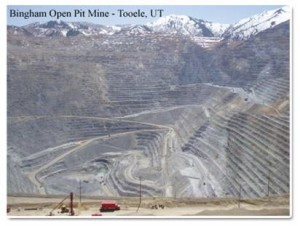from Wildlife Promise
0 1/3/2013 // Nic Callero// Clean Water Act, endangered species, endangered species act,Endangered Species Coalition, Global Warming, jaguars, mining, Pacific Northwest, Pebble Mine, pollution, rosemont mine, water pollution,Wildlife, Wildlife Watch
There is only one Jaguar in the entire United States, which explains why it took sportsman Jack Childs five years using ten different motion sensor trail cameras to get a single picture of one of the most powerful cats in the entire world. Jack initially spotted the cat on a hunting trip.

Flickr photo by Jerry Oldenettel.Jaguars are the third largest species of cat after lions and tigers and are the largest species of cat in the western hemisphere. They used to call the western Unites States home, but as human development encroached on their habitat they migrated primarily to the uninhabited deserts of South America. That is until now, as Jack Child’s photo proves that one brave young male Jaguar adorned with black rosettes is back to re-claim his American territory.
The return of this Jaguar to its previous U.S. habitat is somewhat of perfect timing. After years of lawsuits, the U.S. Fish and Wildlife Service recently issued a plan to recover the endangered species to its native North American terrain. FWS proposed designating 838,232 acres as critical jaguar habitat—covering four stretches of mountains in southeastern Arizona, a section of the Peloncillo Mountains on the Arizona–New Mexico border, and a tiny piece of New Mexico’s San Luis Mountains.
Despite this critically important step forward there still exists a potentially frightening roadblock to the Jaguar recovery. Not too far from where Jack Childs photo was taken and smack dab in the middle of the recently designated “critical Jaguar habitat” is a pending proposal to develop a large scale copper mine.
Rosemont, the local subsidiary of a Canadian mining corporation, is requesting permits to dig a mile-wide, half-mile deep pit and dump waste rock and tailings on more than 3,000 acres of National Forest land.
In addition to threatening the recovery of the Jaguar other issues with the mine proposal already highlighted by EPA, DEQ and the Forest Service include: Serious impacts to drinking water to local residents, potential violations to Arizona aquifer water quality standards and the mine is expected to damage historic and cultural sites from the massive pits dug to extract the minerals.

Utah mine similar to Rosemont Mine proposed in Arizona- photo EarthworksToday’s industrial-strength mines involve the blasting, excavating, and crushing of thousands of acres of land and the use of huge quantities of toxic chemicals such as cyanide and sulfuric acid. Moreover, hardrock mines are notorious for polluting adjacent streams, wetlands, and groundwater.
In this dry arid environment where water is arguably more precious than any metal, Rosemont Copper is proposing to dump untreated mining waste on 10–15 miles of streams and desert springs.
If you care about clean water and responsible energy development, and if you care about helping the endangered jaguar recover to its native North American range, please speak up today and ask the Environmental Protection Agency and Army Corps of Engineers to prevent mining companies such as Rosemont Copper from endangering our fish, wildlife, and communities with industrial pollution.
Let’s give this magnificent jaguar a fighting chance!
No comments:
Post a Comment